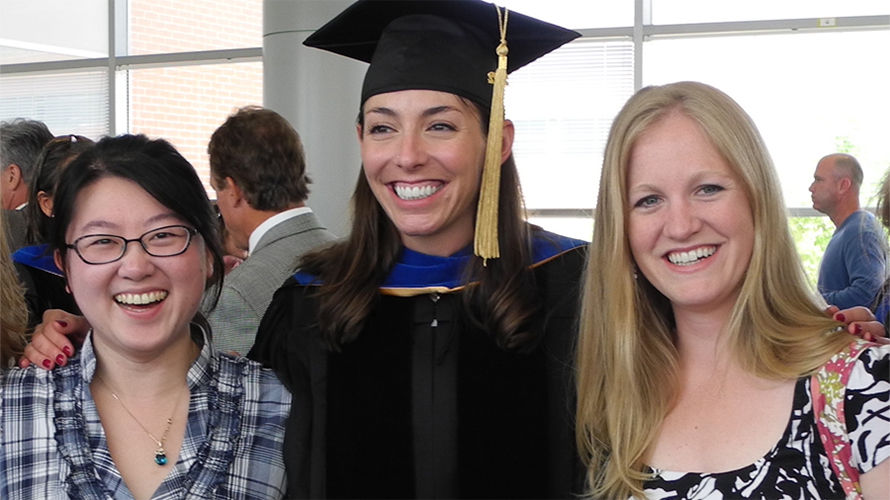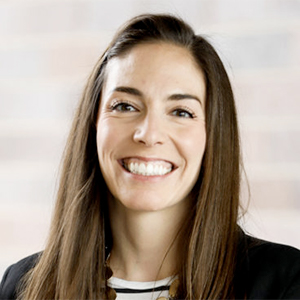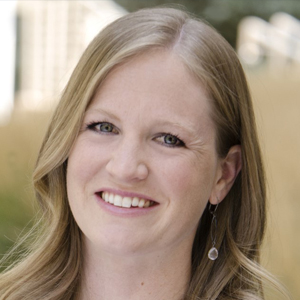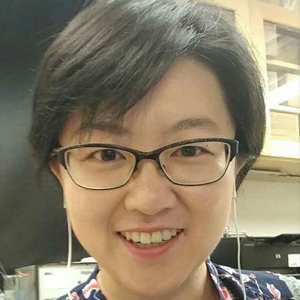Scientific sisterhood knows no bound(arie)s
Even before the pandemic rolled around, each of us felt isolated at work.
Megan: I was in my sixth year as a faculty member at a primarily undergraduate institution, which can be isolating scientifically when the researchers are all undergraduates and the department is small enough that colleagues work in vastly different biochemical fields. I missed having a community of experts, particularly within my field of research, where I could discuss and develop ideas.
Yumeng: I was an international postdoctoral fellow at an R1 institute when the pandemic hit. I’d worked on a project that was close to publishing and designed and taught multiple courses at my university. The pressure to advance my career boiled down to tough career and life questions: Should I stay in academia or go to biotech? Should I find a job in the U.S. or back home?
Marisa: I was in the fourth year of a postdoc in a lab that was still a bit of a culture shock, despite being in the same institution where I did my Ph.D. I’d been warned not to stay for a postdoc, and then I was overwhelmingly advised to “diversify your training” (translation: change fields, departments, colleagues as drastically as possible). So I changed fields substantially. While many skills transferred, I couldn’t help but feel like a round peg trying every day to cram myself into a square hole. The intellectual fit was off, and the feeling of unbelonging was pervasive.
Were our feelings of isolation and not belonging the result of our career choices, or were they a byproduct of the physical/social isolation of the pandemic? More importantly, were they inevitable, or was there something we could do about them?
The need for community
The communities we exist in as we navigate an academic science career path uniquely shape the way we think: our connections and collaborations we make, our blind spots and even our passion for our work. This is part of why we are told that it is so important that we diversify our training at each career step — from undergrad to grad school to postdoc — because new communities allow us the opportunity to broaden our view of science and expand our expertise.
Historically, this diversification has been synonymous with moving around the country or the world to pursue training opportunities. While this can be wonderful, it becomes a problem when — for whatever reason — we are restricted to working in locations or communities that are not supportive.
The issue of geography disproportionately impacts women’s careers. Women who choose to move from place to place in pursuit of their career ambitions often uproot themselves from family and other support systems that are so important for women generally and for mothers especially. On the other hand, a woman who restricts herself geographically for a spouse’s career or to remain close to family also restricts her opportunities — and elicits the side-eye of grant reviewers and colleagues who see her as not taking her career seriously.

Whatever side of this Catch-22 a woman ends up on, she needs to be engaged in a supportive community. Multiple studies show that work climate has a huge impact on women’s career advancement — and even more so for women in STEM disciplines. In addition to inequitable hiring, funding, salary, teaching expectations and resource allocation, women in STEM lack support networks and mentorship. This can lead to feelings of isolation, self-doubt, imposter syndrome and incompetence that all manifest in a lack of female STEM leaders (according to AAUW, women only make up 28% of the STEM workforce). Additionally, it’s no secret that mental health in science is a big problem without clear solutions, and our workplace cultures absolutely play a role in this.
In discussions about how to improve academic science both as a career path and as a way of life (let’s be honest — that’s really what it is), we must recognize the importance of the communities and environments we work in. We must understand the attributes that make a culture productive, ethical and nurturing and the attributes that don’t. Moreover, we need a toolkit to deal with the inevitable times when our environments just aren’t checking our intellectual or emotional boxes.
So we asked ourselves whether we could create our own environment to fill the gaps in our intellectual and professional lives.
The RPL3 sisterhood
The three of us grew up together in science. Between 2009 and 2012, we worked side by side in a graduate research lab at the University of Colorado School of Medicine, and despite joining the lab in different years, we developed a deep bond as scientific peers and more specifically as what we call “scientific sisters.” As graduate students, we taught each other experiments we had mastered individually, ran ideas by one another, and looked at one another’s data to see if we had come to the same conclusions. We created an environment of mutual respect, encouragement and empowerment as we became independent scientists.
Could we recreate that environment now that we were spread out across the country, working on different scientific questions and in different stages of our careers? After a few months of social and physical isolation as we all shifted to working from home in early 2020, we decided to give it a try.
In June 2020, we crafted a plan: We would rotate presenters on Zoom for an informal weekly group meeting. Each of us would present data or an idea, and we would simply discuss. Probably because we so craved this kind of interactive and lively discussion, buy-in was immediate from all three of us, and our group was born. We jokingly called our group RPL3 — initially short for “RNA Power Ladies x 3” until we realized it could also be a very nerdy nod to our common love for ribosomes (ribosomal protein L3 is abbreviated “rpL3”).
After a few months, our meetings evolved and became a flexible space where, in addition to data, we could present practice talks for upcoming poster or seminar presentations. We also had some stress-relieving sessions when we just needed to vent and have someone supportive to listen. More than a year and a half later, we are still meeting — now twice a month — and we have helped each other problem-solve difficult experiments in the lab and overcome career obstacles and career moves. While we still face some isolation at work, the three of us agree that this group has been a game changer in terms of intellectual and emotional support.
Build your own
Are you seeking mentorship, connection and support? Take a moment to consider the people in — or out of — your environment whom you respect, admire and feel comfortable seeking guidance from. This could include a colleague a few doors down or someone in a different time zone. Reach out to them and ask if they’d be willing to participate in a small, structured group with a focus on learning from one another, thinking about big-picture ideas and participating in informal peer reviews. It may take a few group iterations for you to find the right fit — individuals who are dedicated to the group’s mission, protect the time your group meets and participate wholeheartedly.
Even in the midst of a pandemic when you’re feeling very isolated, we hope you’ll find that the supportive community you create — your own scientific sisterhood — helps you persist and succeed long into the future.
Enjoy reading ASBMB Today?
Become a member to receive the print edition four times a year and the digital edition monthly.
Learn moreGet the latest from ASBMB Today
Enter your email address, and we’ll send you a weekly email with recent articles, interviews and more.
Latest in Opinions
Opinions highlights or most popular articles

Debugging my code and teaching with ChatGPT
AI tools like ChatGPT have changed the way an assistant professor teaches and does research. But, he asserts that real growth still comes from struggle, and educators must help students use AI wisely — as scaffolds, not shortcuts.

AI in the lab: The power of smarter questions
An assistant professor discusses AI's evolution from a buzzword to a trusted research partner. It helps streamline reviews, troubleshoot code, save time and spark ideas, but its success relies on combining AI with expertise and critical thinking.

How AlphaFold transformed my classroom into a research lab
A high school science teacher reflects on how AI-integrated technologies help her students ponder realistic research questions with hands-on learning.

Writing with AI turns chaos into clarity
Associate professor shares how generative AI, used as a creative whiteboard, helps scientists refine ideas, structure complexity and sharpen clarity — transforming the messy process of discovery into compelling science writing.

Teaching AI to listen
A computational medicine graduate student reflects on building natural language processing tools that extract meaning from messy clinical notes — transforming how we identify genetic risk while redefining what it means to listen in science.

What’s in a diagnosis?
When Jessica Foglio’s son Ben was first diagnosed with cerebral palsy, the label didn’t feel right. Whole exome sequencing revealed a rare disorder called Salla disease. Now Jessica is building community and driving research for answers.



